Every hour of practice brings your child closer to success.
Let’s work together to ensure your child excels on the test!

Hey there! Do you have a question about the test or our practice package? Email me at roman@staggingapps.website. I'm here to help your child succeed!
The following sample questions are also available in a printable PDF for offline practice.
Figure Matrix questions are either 2×2 or 3×3 matrices comprised of different pictures. In each row and/or column, the pictures change in the same way or follow the same rule.
Choose the answer that goes in the empty box in the matrix following the same rule.

The correct answer is D.
The figure on the right side is obtained by inverting the filling of the shape that the figure on the left side contains.
Only option D meets the criteria where the shading of all shapes has been inverted.
This means that D is the correct answer.

Welcome! If your child is preparing for the 2025 CogAT 6th Grade Test (Level 12), you’ve come to the right place.
The following comprehensive practice resources are designed to help your child build confidence, improve their skills, and achieve higher scores so that they qualify for your desired gifted program.
The correct answer is 3.
In this question, the rules that connect the figures of the first two rows are:
The first shape is inscribed into the second one and the bottom half of the combined figure gives the third shape. Moreover, the original colors alternate.
The only option that fits this description is the 3rd one.
In Figure Classification questions, three pictures share a connection or a characteristic. Choose the answer that shares the same connection/characteristic from the answer choices.

The correct answer is 4.
The common patterns of the three figures are as follows:
Two identical shapes are combined in such a way that the top shape is rotated by 90 degrees (one-quarter a rotation) counterclockwise with respect to the bottom shape.
The only option that fits this description is the 4th one. The correct answer is therefore 4.
Each question shows a paper folded several times and then punched with holes. The answer choices contain unfolded papers with punched-in holes. You need to determine which of the answer choices is the final product of the unfolded punched-in paper.

The correct answer is 2.
Hence, the correct answer is 2.
Nonverbal questions can feel unfamiliar at first, especially under time constraints. Recognizing patterns, solving matrices, and making quick decisions all require practice.
With consistent exposure, these questions become easier, building both accuracy and confidence.
To reinforce these skills, 140+ targeted CogAT Nonverbal questions are available in the complete practice package, helping your child develop a strong problem-solving approach and improve their test performance.
Help your child prepare with a complete practice package designed to maximize their chances of scoring high and getting accepted to advanced programs.
Each question provides two pairs of numbers with a certain mathematical connection and another number that shares that connection with one of the answer choices. Find the missing number for the third pair.
[7 → 56] [8 → 71] [9 → ?]
A. 98
B. 88
C. 68
D. 64
E. 90
Correct Answer: 88
In this number analogy, each value on the right side of the pair is generated by taking the square root of the corresponding value on the left side and then adding 7.
For instance, when we take the square root of 7 and then add 7 to get 56. Similarly, by taking the square root of 8 and adding 7, we obtain 71. Following this consistent pattern, the next step is to take the square root of 9 and add 7, which is 88.
Therefore, the correct answer is 88.
Each question provides a series of numbers that have a rule. Use the rule to determine which number will come next in the series.
2 12 6 36 18 108 54 ?
A. 68
B. 96
C. 112
D. 224
E. 324
Correct Answer: 324
In the series, the number is obtained by multiplying the previous number by 6 and dividing the previous number by 2 alternatively.
The sequence is 2*6=12, 12/2=6, 6*6=36, 36/2=18, 18*6=108, 108/2=54 and 54*6=324.
In each question you are given one or more equations. You must solve the equations to determine the number that goes instead of the question mark.
(⍰ × 5) – (♦ ÷ 3) = ▲ × 10
♦ = 45
▲ = 100 – 25
A) 144
B) 153
C) 168
D) 180
E) 192
Correct answer: 153
Solution:
▲ = 100 – 25 = 75
(⍰ × 5) – (45 ÷ 3) = 75 × 10 (Using ♦ = 45 and ▲ = 75)
(⍰ × 5) – 15 = 750 (Dividing 45 by 3 and multiplying 75 by 10)
⍰ × 5 = 750 + 15 (Adding 15 to both sides)
⍰ × 5 = 765 (Simplifying)
⍰ = 765 ÷ 5 (Dividing both sides by 5)
⍰ = 153
Math can feel challenging at times, but consistent practice makes a big difference. Building problem-solving skills step by step helps boost confidence and reduce test anxiety.
Small daily exercises add up, turning tricky concepts into familiar ones. The more your child engages with math, the easier it becomes.
Need extra support? The complete practice package includes 140+ CogAT-style math questions to strengthen key skills and improve test performance.
Each question provides a pair of words that go together in a certain way and a third word. Choose a word from the answer choices that goes together with the third word in the same way.
eloquent → expressive : flamboyant→
A. simple
B. fixed
C. clash
D. ostentatious
E. present
The correct answer is ostentatious.
Something eloquent is expressive. Something flamboyant is ostentatious. In this case, the first and second words have similar meanings. They are synonyms.
Choose the word or words from the answer choices that best complete the sentence.
The government introduced new laws to ______ pollution and protect the ______ of endangered species.
A. regulate .. enjoyment
B. expand .. destruction
C. promote .. loss
D. allow .. safety
E. limit .. survival
The correct answer is (E) limit, survival.
“Limit” means restricting or reducing something to a smaller or more controlled amount. Governments introduce laws to limit pollution by setting regulations on emissions, waste disposal, and industrial activities.
“Survival” refers to the continued existence of endangered species. Many species face extinction due to habitat destruction, poaching, and climate change.
By enforcing laws that protect natural habitats, regulate hunting, and promote conservation efforts, the government helps ensure the survival of these species, allowing them to reproduce and maintain their populations.
Each question provides three words that are alike in some way. Decide how they are alike, and choose the word that belongs in the same group as the first three words.
wing fin rudder
A. float
B. buoy
C. core
D. engine
E. fly
The correct answer is buoy.
A wing, fin, rudder, and buoy help items stay afloat or balanced. These could all be found on a boat or other marine vessel.
Give your child the confidence to tackle the CogAT with full-length practice tests and skill-focused drills that mirror the actual exam.
Comprehensive Practice for Stronger Skills:
Gain access to 27 full-length practice tests and 440+ CogAT-specific questions designed to develop critical thinking and reasoning skills. Gradually, your child will strengthen their ability to handle complex problems with confidence.
Realistic Test Experience:
Familiarity breeds confidence. With full-length practice tests that simulate the actual CogAT 6th grade exam, your child will get comfortable with the test format, question styles, and time limits—making exam day less stressful and more successful.
Focused Skill Improvement:
Practice drills target verbal, quantitative, and nonverbal reasoning, helping your child sharpen the exact skills the CogAT measures. This structured approach ensures thorough preparation and steady progress in areas that need the most attention.
Challenge Questions for Advanced Learners:
For students aiming for top scores, 130+ advanced-level questions provide an extra challenge. These questions push cognitive abilities further, strengthening high-level reasoning and test-taking stamina.
Kid-Friendly Explanations for Deeper Understanding:
Every question includes a clear, step-by-step explanation written in easy-to-understand language. This ensures that mistakes become learning opportunities, helping your child grasp concepts faster and apply them correctly.
Expert-Designed for Effective Learning:
Developed by experienced educators and test prep specialists, these materials align with educational standards and best teaching practices to provide a well-rounded, effective preparation experience.
Confidence with a Risk-Free Guarantee:
Try our CogAT practice package risk-free. If you’re not satisfied within 30 days, we offer a full refund.
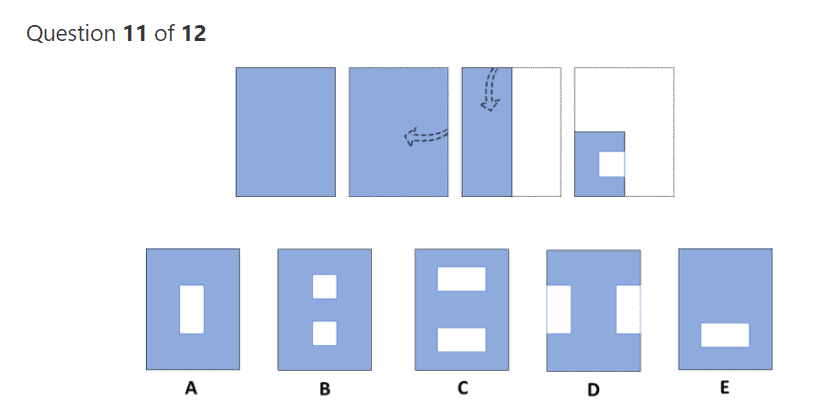
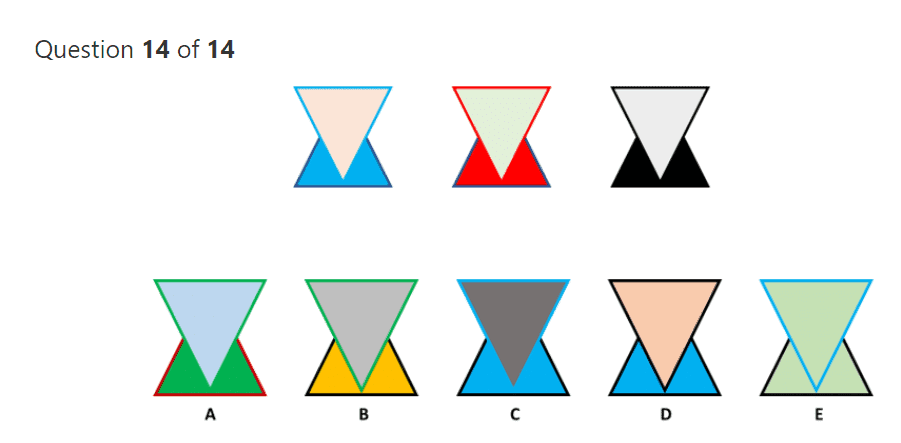
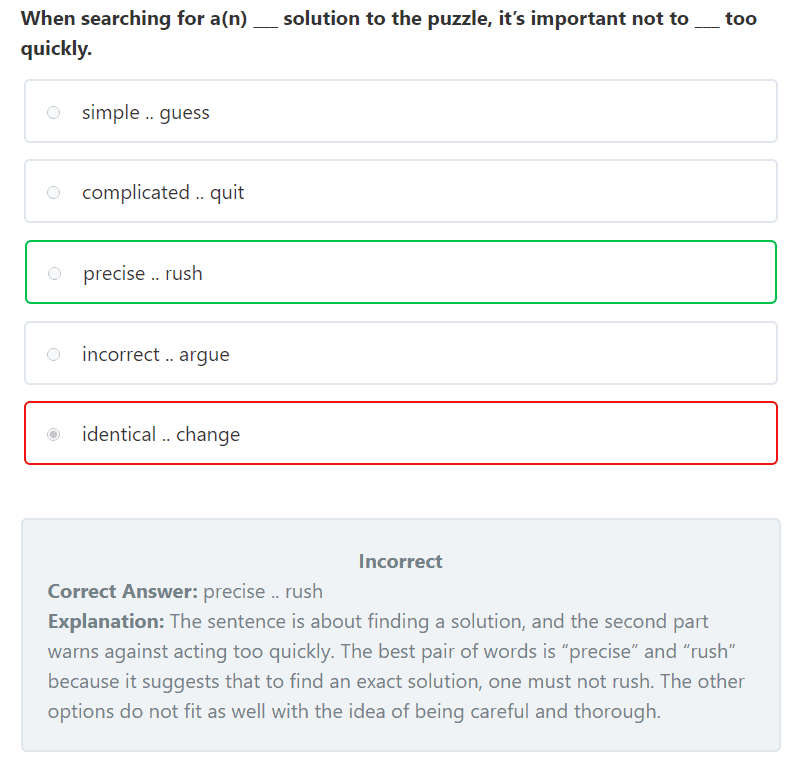

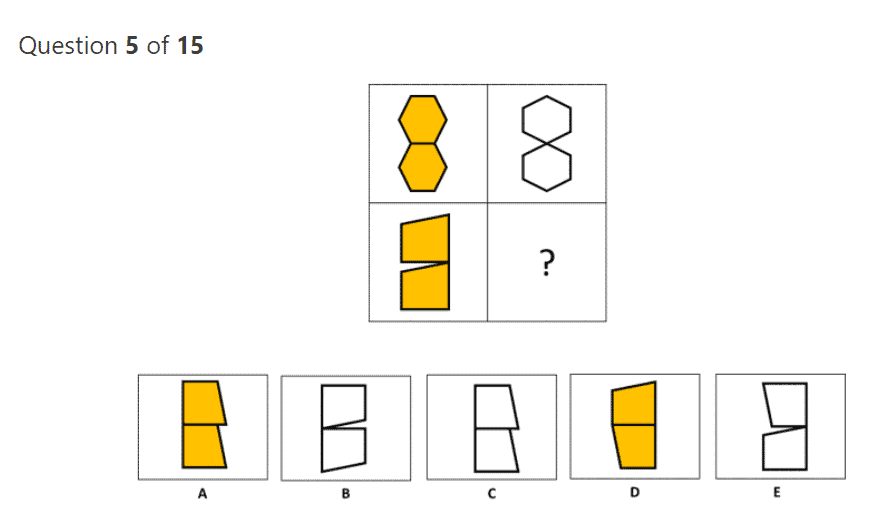
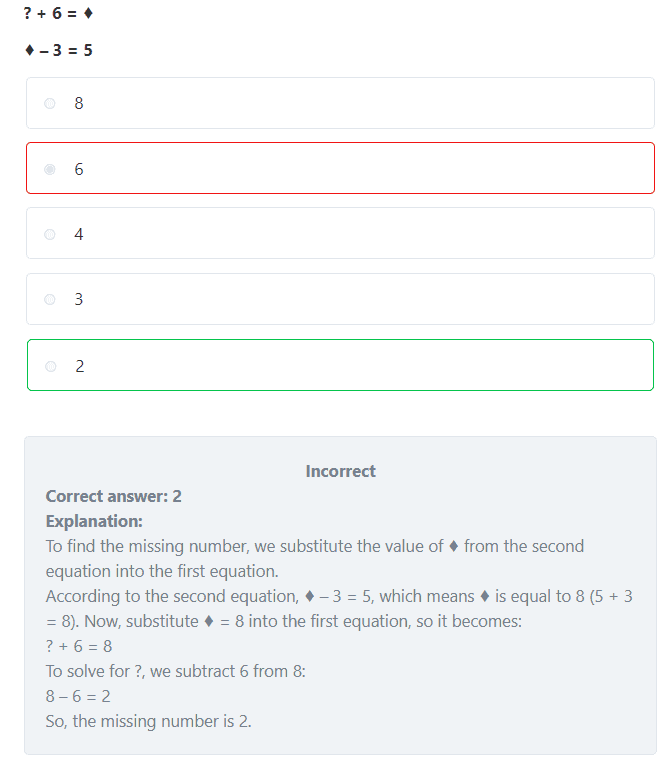
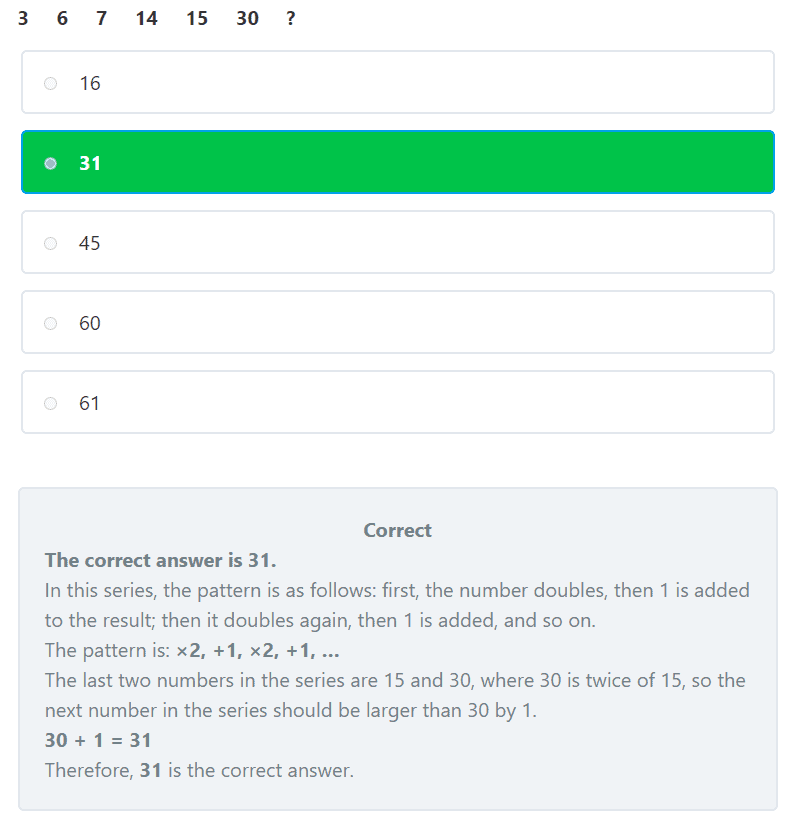
One-time Payment & 6-Month Unlimited Access
The CogAT (Cognitive Abilities Test) for 6th graders measures how students think, solve problems, and recognize patterns. Schools use it to assess reasoning skills and identify students for gifted and talented programs.
This test includes 176 questions and is designed for students around 12 years old. It evaluates three key skill areas:
Each section is divided into three subtests, ensuring a well-rounded assessment of thinking skills.
Schools may choose to give the test in one session or across multiple days, depending on their schedule and students’ needs.
Check the table below for a detailed breakdown of the subtests in each section:
| No. of Questions | Time Limits | |
|---|---|---|
| Nonverbal Battery | ||
| Figure Matrices | 22 | 10 minutes |
| Figure Classification | 22 | 10 minutes |
| Paper Folding | 16 | 10 minutes |
| Quantitative Battery | ||
| Number Analogies | 18 | 10 minutes |
| Number Series | 18 | 10 minutes |
| Number Puzzles | 16 | 10 minutes |
| Verbal Battery | ||
| Verbal Analogies | 24 | 10 minutes |
| Sentence Completion | 20 | 10 minutes |
| Verbal Classification | 20 | 10 minutes |
| Total | 176 Questions | 90 minutes (not incl. settling time) |
The complete practice package includes a full-length simulation with the same number of questions (176) and time limits (90 minutes). This will enable your child to get used to the test’s time pressure and improve their time management skills.
Parents sometimes hear that cognitive ability tests like the CogAT can’t be prepared for or that studying might give students an unfair advantage.
In reality, preparation isn’t about memorizing answers—it’s about building confidence, developing problem-solving strategies, and ensuring your child is ready for the challenge.
Here’s why practice makes a difference:
Reduces Test Anxiety – Unfamiliar questions can feel intimidating, even for high-achieving students. Practicing ahead of time helps ease nerves, making the test experience smoother and less stressful.
Introduces Unique Question Types – The CogAT includes questions that students don’t typically see in school, such as figure matrices and paper folding. Exposure to these question formats allows students to approach them with confidence and a clear strategy.
Strengthens Thinking Skills – Preparation isn’t just for the test—it improves critical thinking, pattern recognition, and reasoning skills, which benefit students in school and beyond.
Levels the Playing Field – Many students prepare for this test, and those who don’t may find themselves at a disadvantage. Practice ensures your child has the same opportunity to showcase their abilities.
Getting into gifted programs is competitive, and raw ability alone isn’t always enough. Preparation ensures your child can fully demonstrate their potential when it matters most.
Your child deserves the best preparation to feel confident and perform their best on the CogAT test. That’s why we’ve created a thorough practice package tailored specifically to meet their needs.
Access 440+ practice questions across the Nonverbal, Quantitative, and Verbal batteries, designed to mirror the questions seen on the CogAT.
Build your child's confidence and abilities with targeted quizzes that focus on strengthening their knowledge in each of the 9 subject areas.
Boost your child’s problem-solving skills with advanced-level drills designed to stretch their abilities, making the actual test feel like a breeze.
One-time Payment & 6-Month Unlimited Access

Sharpening your child's skills with lifelike practice for gifted tests and school exams.
© 2025 GiftedReady | HTML Sitemap